After the flood, Vermont arts carry on while picking up the pieces
MONTPELIER ― Following three years of uncertainty with the COVID-19 pandemic, the creative team at Lost Nation Theater was ready to hit its stride again with its summer production of “The Addams Family” musical.
Lost Nation was deep in rehearsals with a cast and crew of 60, putting the company on track to present the musical in a 15-show run starting July 20. This year, according to the theater company’s producing artistic director, Kathleen Keenan, was supposed to be the “back-to-normal” year.
Instead, 10 days before opening night, the worst flooding to hit Montpelier in decades ravaged the capital city’s downtown. Lost Nation’s upstairs theater at City Hall was unharmed, but the building itself was significantly flooded, shutting it down to the public.
That stranded the half-completed set for “The Addams Family” inside and marooned Lost Nation without a place to stage the production shortly before opening night. The company scrambled to find temporary housing for displaced crew members, a rehearsal space and an alternate venue before presenting a two-show run in nearby Barre.
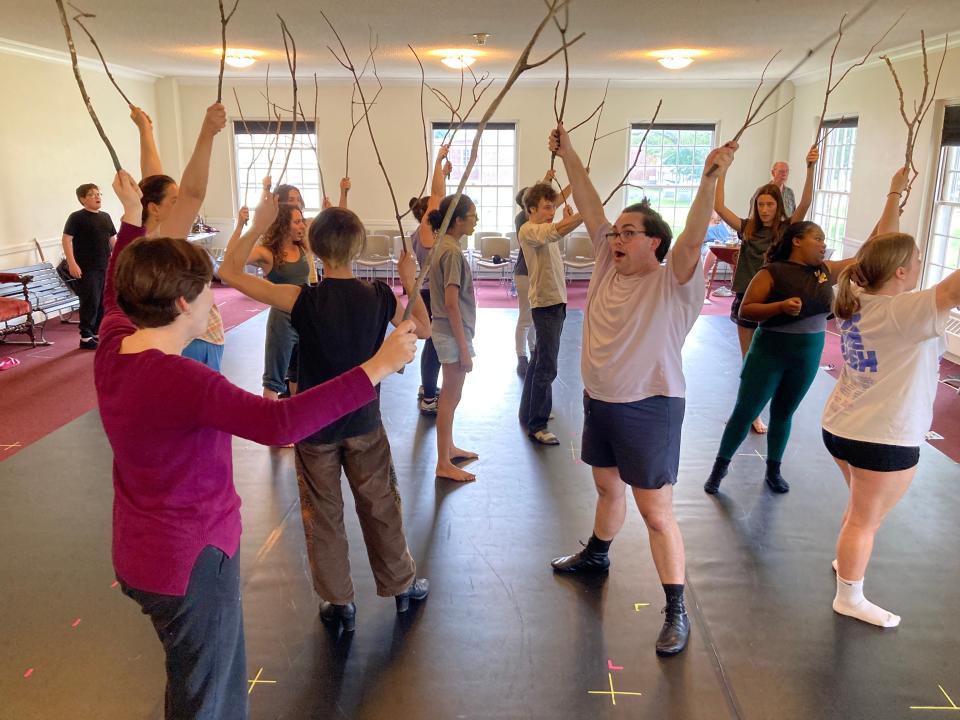
The floods one month ago devastated several Vermont communities. Lost Nation Theater, the Weston Theater Company in southern Vermont and the Vermont Studio Center in Johnson were among the arts organizations most-heavily impacted by the flooding.
The cliché in the arts world, of course, is that the show must go on. In the case of those three organizations shows did indeed go on, albeit in unexpected and creative ways.
“We just wanted to have the opportunity to perform the show after we put so much work into it,” said Kim Bent, founding artistic director of Lost Nation Theater. The company kept local residents in mind, he said, especially those who suffered similar devastating losses.
“We talked about how inspirational it would be for the community,” Bent said during a break in rehearsals for “The Addams Family,” “if we could pull this off and get a couple of performances in.”
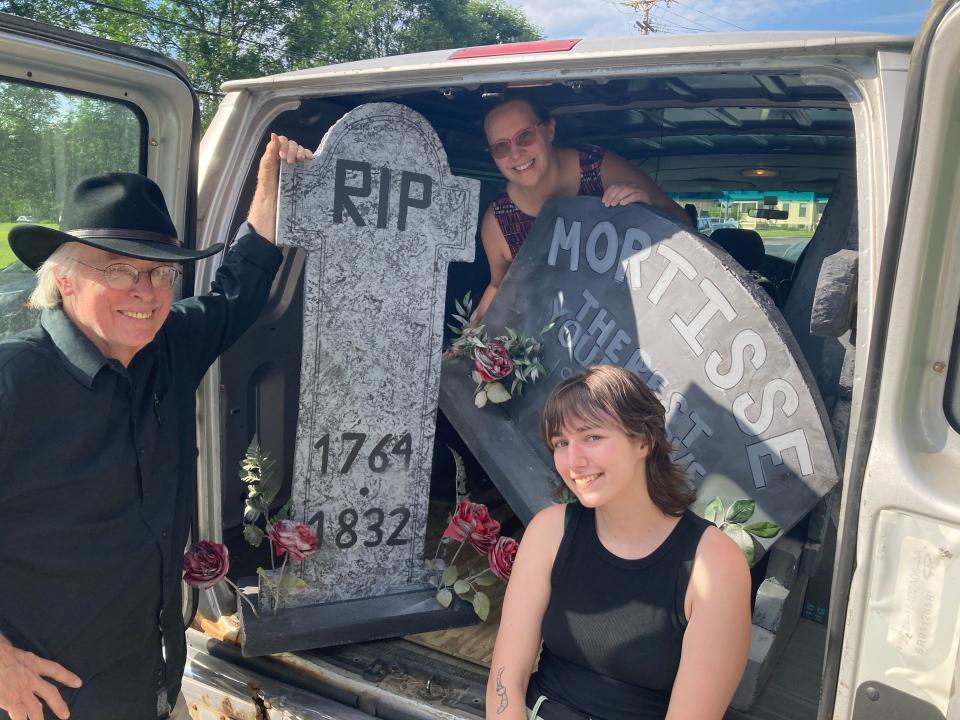
Salvation at Lost Nation
Monday, July 10, was an off-day for most of the cast and crew of “The Addams Family.” Bent was at City Hall with scenic designer Kelley Daigneault, working on technical aspects of the musical. It had been raining steadily for 24 hours in the city along the Winooski River.
“We realized that the water was coming up at City Hall,” Bent said. He and Daigneault decided to stay in the relative safety of the upper reaches of City Hall. Bent communicated with Keenan, his wife who was back at the couple’s Elm Street home that was also threatened by flooding.
Keenan joined Bent and Daigneault at the theater. They spent part of the night moving cars to higher and higher ground. They hunkered down at City Hall until an emergency alarm at 5 a.m. Tuesday was followed by an order to leave.
Bent and Keenan, who were displaced from their home for four days, rushed to find alternate housing for cast and crew also affected by high waters. They commiserated with the show’s director, Eric Love, about what to do with “The Addams Family.”

Love wasn’t sure if the production should continue. “There’s bigger problems in this state than live theater,” he remembers thinking. “Everyone’s trying to find their way to move on.”
Love held a rehearsal and told the cast that the production might not continue. He saw the actors’ faces fall, especially those of the dozen teen performers who had rehearsed in what the company called “boot camp,” 70 hours in which they learned the show.
“I thought, ‘We need to find a win for them,’” Love said.
That applied to the entire cast and crew, according to Bent.
“It would have been devastating psychologically for everybody involved” to not do the show, he said during a break in rehearsals two days before “The Addams Family” was to be staged in Barre.
“This,” Bent said, “is salvation.”
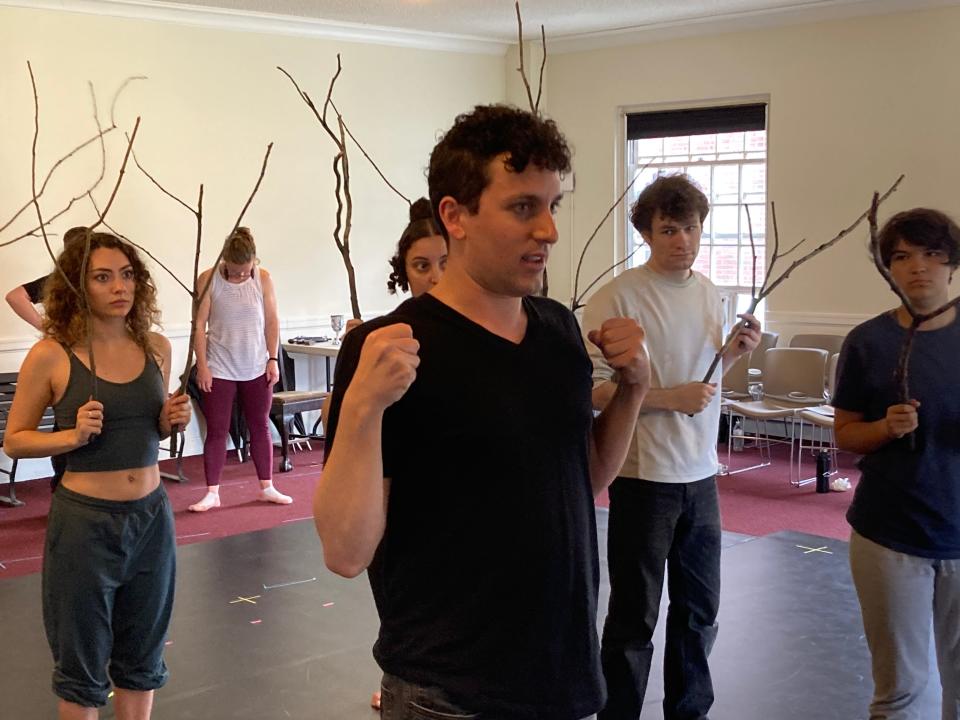
‘Glorious’ nights with 'Addams Family' in Barre
The Vermont College of Fine Arts, the hilltop campus that this year moved its residency programs from Montpelier to Colorado, let Lost Nation use the first floor of Noble Hall for get ready for the production. The Barre Opera House told the company it could stage the two-day run of “The Addams Family” in that neighboring community.
Though Lost Nation lost what Bent called “rare and valuable pieces” of sets and props from past performances, the show was on as far as “The Addams Family” was concerned. But it would change just before opening night.
The audience envelops the stage on three sides at the 200-seat Montpelier City Hall Arts Center, but the 500-seat Barre Opera House has a proscenium stage, meaning the entire audience faces the performers. At a July 20 rehearsal, Love had to remind one performer multiple times to look toward him – sitting where the audience would be - rather than his fellow actors when reacting to something a cast member said.
Love said the production timeline for “The Addams Family” was already tight, and by having to re-block the staging with short notice that timeline was even harder to meet. He worked with actors who were often distracted by the devastation that hit Montpelier, trying to summon joy for a fun musical at a time when joy was hard to find.
Keenan, a veteran performer cast as the mother of Wednesday Addams’ boyfriend, struggled at times to find that joy.
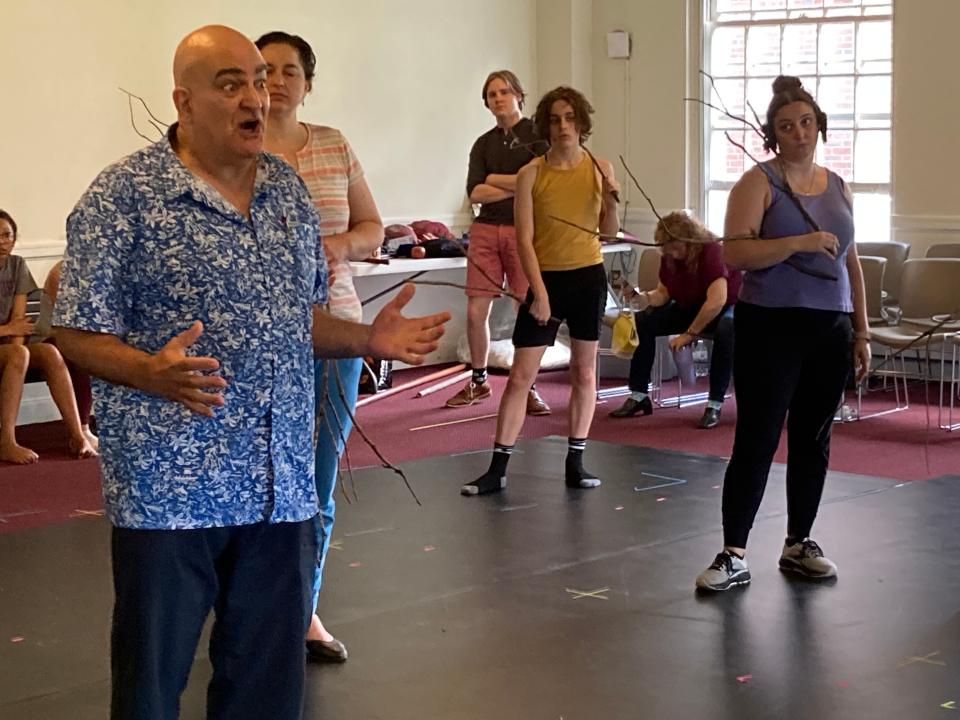
“It really depends on the moment,” Keenan said at rehearsal. “When it was all brand new, summoning the joy was easier.” As the reality of the intense damage to downtown Montpelier became apparent, Keenan grappled deeper with her feelings. She said she asked Love to halt rehearsal once at an emotional moment because she felt like she was about to “lose it.”
Love was prepared to help the cast and crew revel in the production no matter the obstacles they faced.
“I’m going to work my butt off with them,” he said, “and whatever happens these nights will be glorious.”
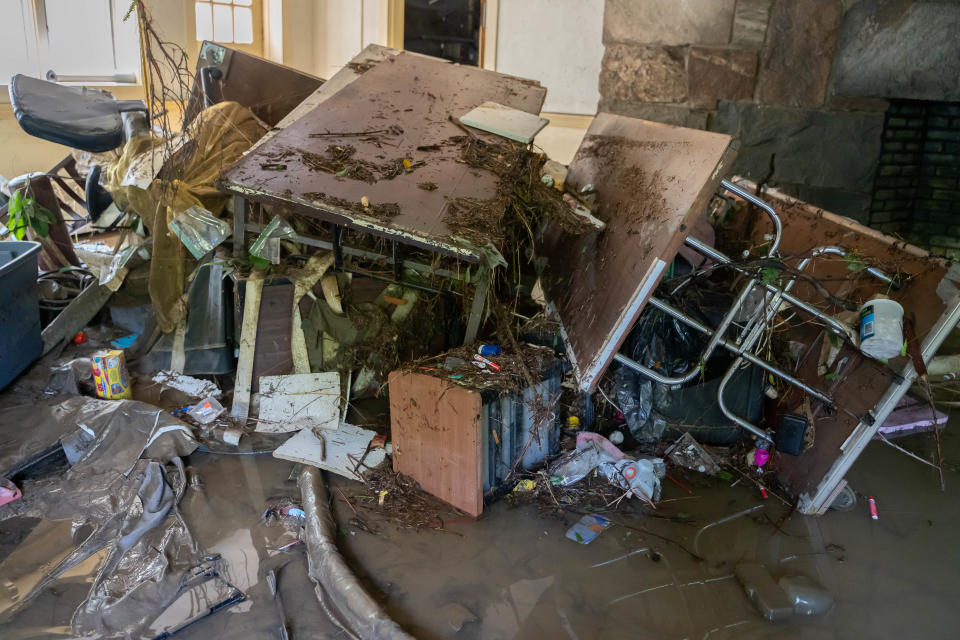
Weston Theater flooded, again
The Weston Theater Company faced similar obstacles when flooding began July 10 in Weston.
“At the time we thought this would be a cleanup, we thought this would be about getting rid of some sheet rock, we thought the optimistic timeframe would be four or five days,” executive artistic director Susanna Gellert said. That was before Weston staff fully assessed the damage.
The high-water mark at the company’s centerpiece building, the Weston Playhouse, reached more than two feet above that measured a dozen years earlier when the Playhouse was flooded by Tropical Storm Irene. This time, water flowed over the orchestra pit and into the first three rows, swamping about 60 of the 305 seats in the theater.
Floodwaters from the West River left a foot and a half of mud in the Playhouse basement. Office space in a separate building was severely damaged. The company with a full-time staff of nine swells to more than 100 during its summer season, and some of the residences those visiting artists stay in also flooded. Gellert and her staff had to find additional housing for them in a region where other residents had their homes flooded as well.
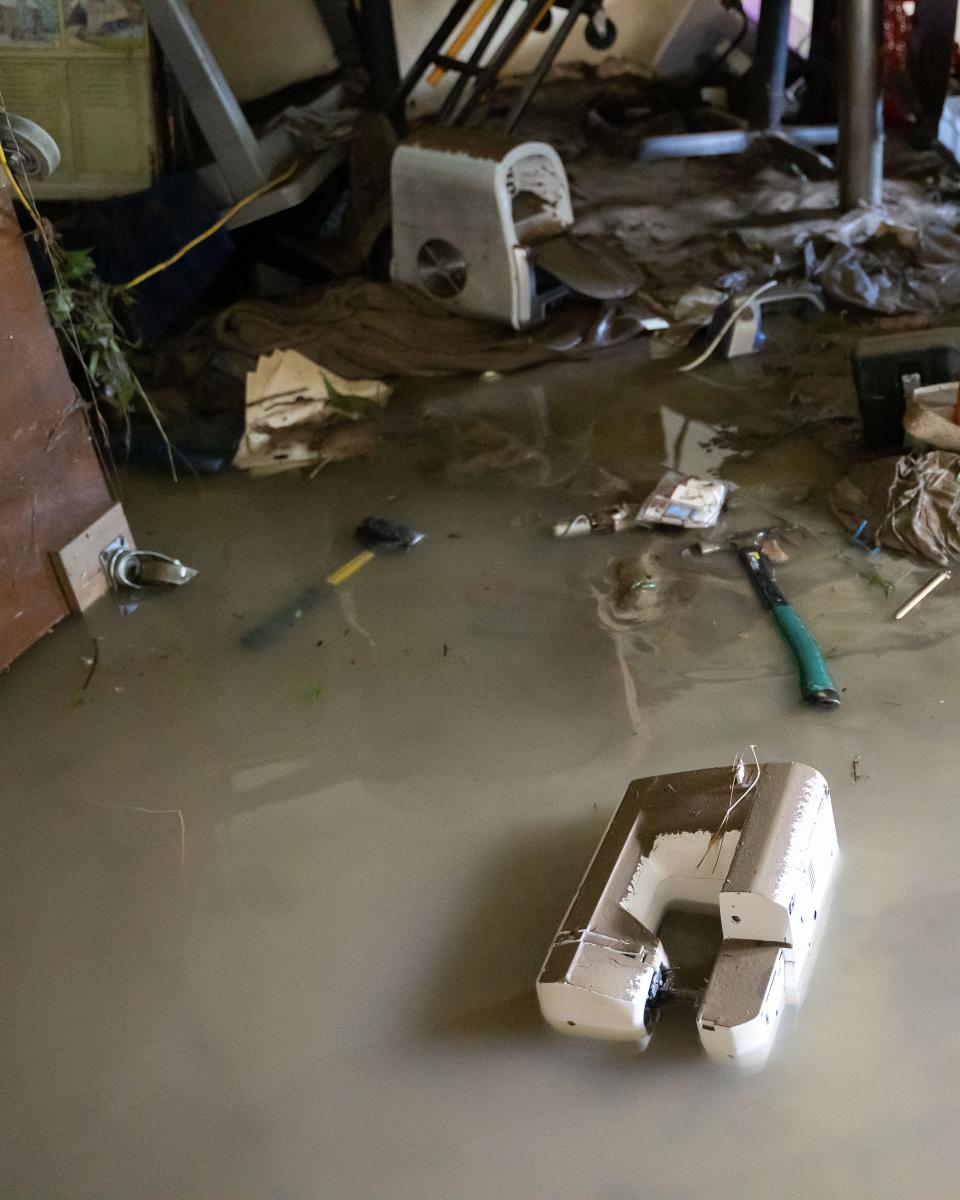
Weston lost several dates for its run of “Buddy: The Buddy Holly Story,” cut two planned productions entirely from its season and moved what will now be its final show this summer – “Singin’ in the Rain,” ironically – to its smaller Walker Farm theater that was not hit by flooding. (Weston was able as planned to stage “What the Constitution Means to Me” at Walker Farm.)
Gellert said she received great advice during the last major disruption to Weston’s schedule, the COVID-19 pandemic: “Make a hard decision quickly rather than a long decision that drags itself out.” For the most part, Gellert said, supporters of the company understood why the season had to be shortened, considering the financial and logistical challenges Weston now faces.
“There was no scenario that wasn’t going to be heartbreaking in some fashion,” she said.
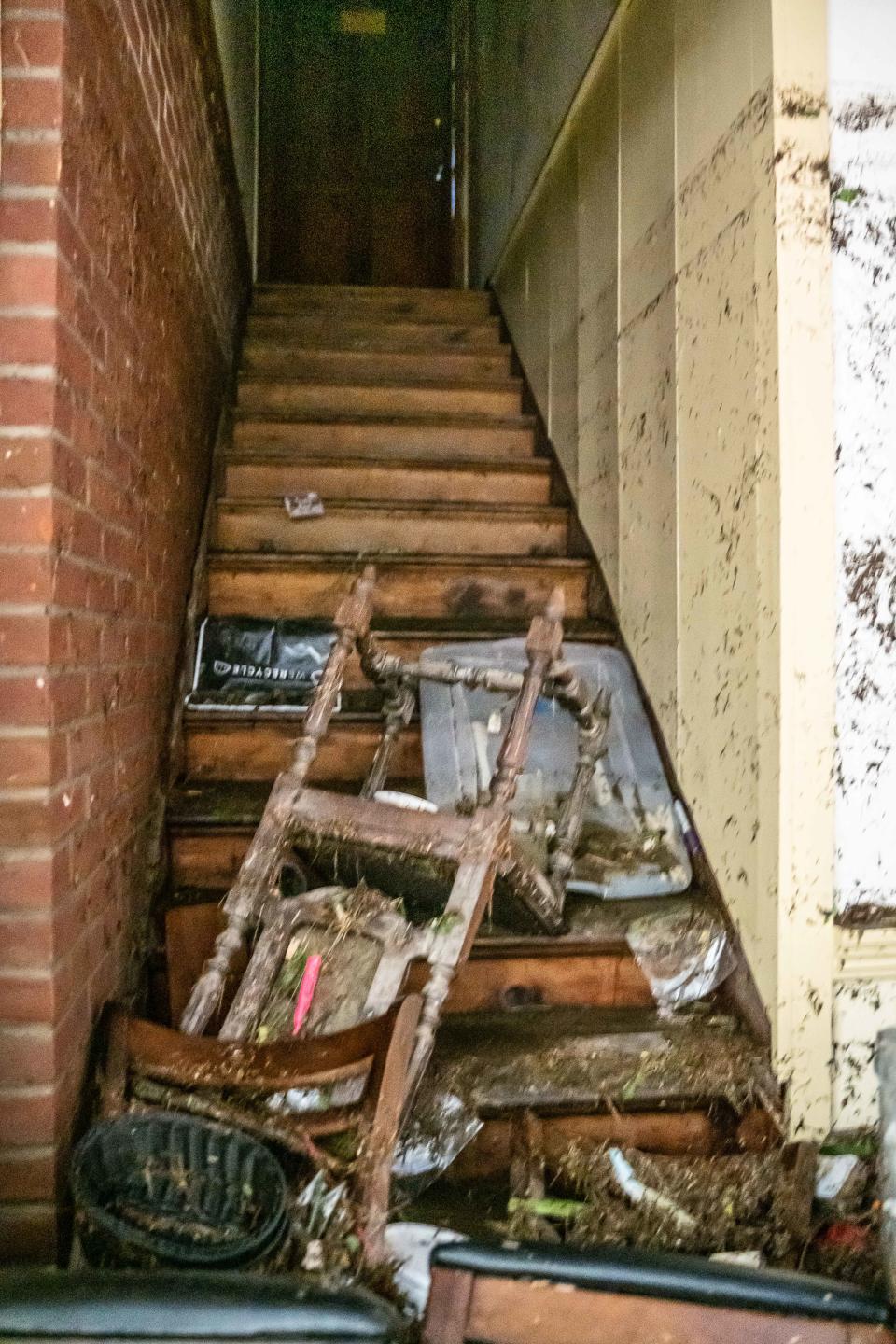
Weston now faces long-term decisions – namely, what to do to curtail flooding at an 86-year-old company that has endured several floods. The historic Greek Revival-style Playhouse is a center of activity in the town of fewer than 1,000 full-time residents, serving as its Town Meeting Day hall. The board overseeing the building will look at what it needs to make the Playhouse flood-resilient if not flood-proof, according to Gellert, by hiring environmental engineers to figure out a course of action.
“If we’re lucky,” Gellert said, “we have three to five years before (flooding) happens again.”
Abandoning the building is not an option. “It would be very hard for any of us to leave it,” according to Gellert. “It would become a gaping hole.”
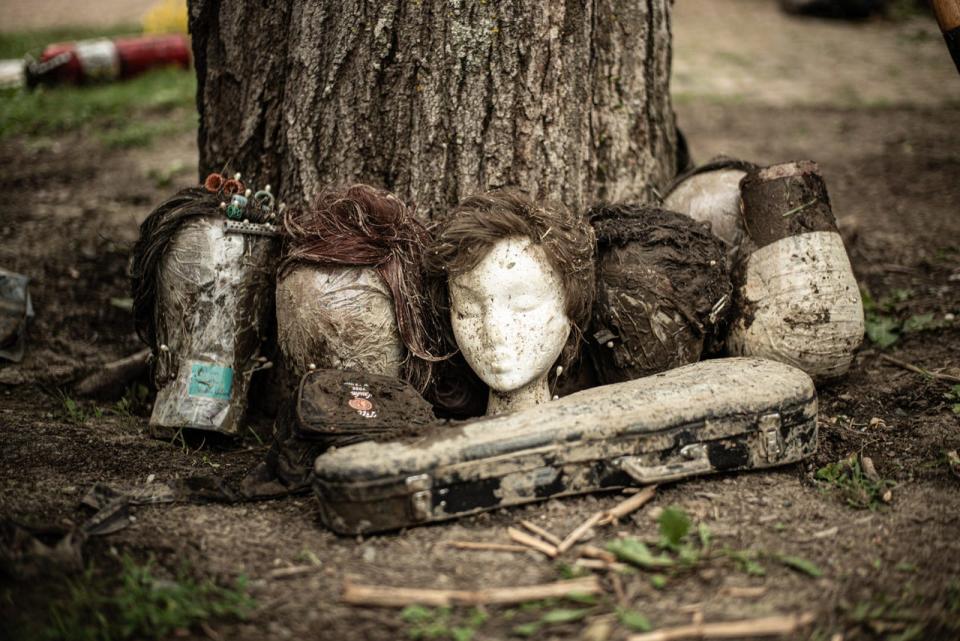
She said the company came back strong from the pandemic, increasing its subscriber numbers at a time when theater organizations are trending in the opposite direction. “We were really tracking ahead not only of the national field but we had aggressive goals for the year and we were tracking for them,” Gellert said. “So it was an incredibly exciting moment to be at the theater.”
Following the flood, she said, Weston will need to tap into that exciting feeling its staff had July 9 as its bedrock to work toward a “second round of comeback.”
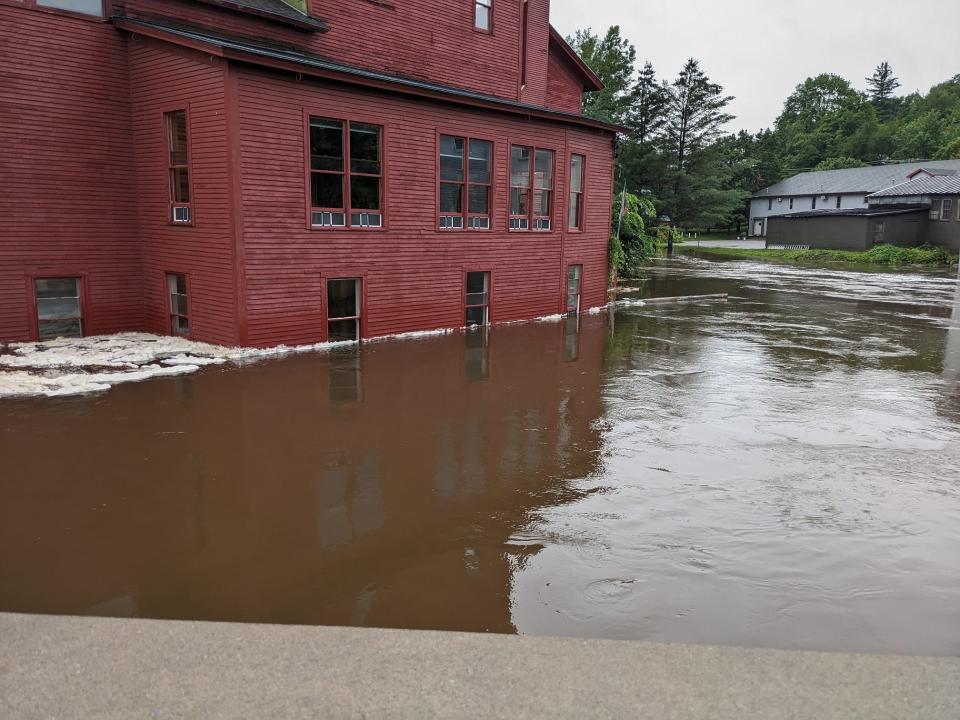
‘Unusual trajectory’ at Vermont Studio Center
The board of the Vermont Studio Center, a site known for its residential campus for visiting writers and visual artists, held an emergency meeting July 10 to discuss the flooding likely to happen at its location in Johnson.
The projection, according to executive director Hope Sullivan, was that the Lamoille River would flood, but no worse than in years past. That could cause an impact on the Studio Center campus, just not necessarily a devastating one.
What no one saw coming was that the Lamoille would back up into the Gihon River, the tributary that runs through the Vermont Studio Center. “It really had an unusual trajectory across our campus,” according to Sullivan.
The floodwaters severely damaged two areas not previously hit by significant flooding. That included what Sullivan called the “heart of the campus,” the Red Mill Building that features offices, a dining hall, gallery space, an art library and a lounge and other private spaces for residents to use.
The Kahn Studio complex, a trio of buildings in a row, had never flooded before. The July rains took out furnaces serving the complex, buildings and grounds and housekeeping equipment, a digital print lab and damaged a collection of prints donated by visiting artists for all of the Studio Center’s 39-year history.
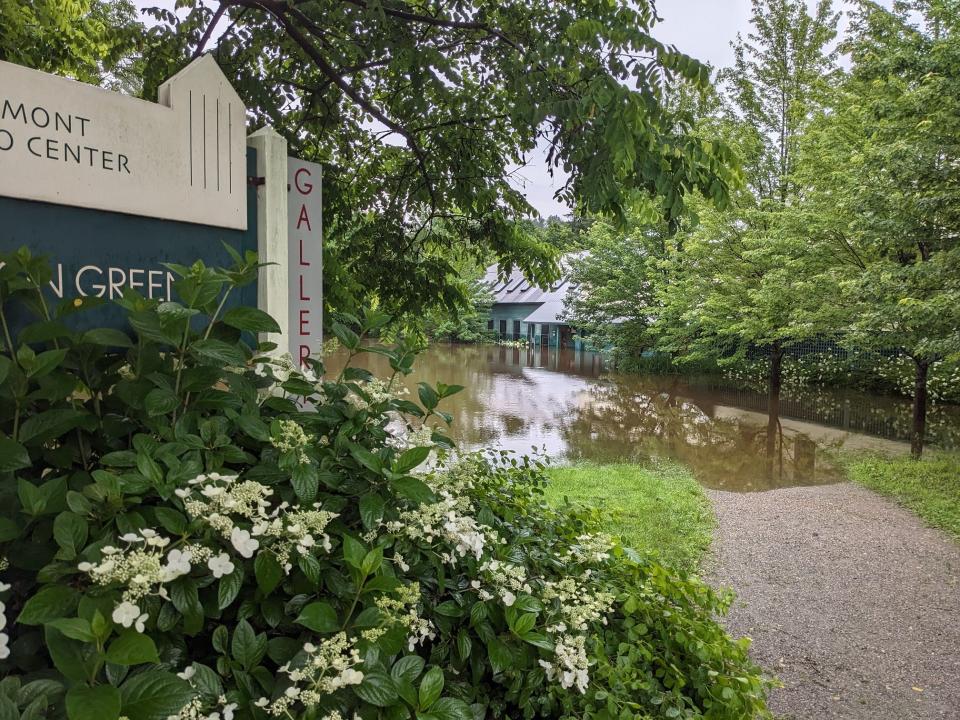
The building closest to the Gihon River, the Kahn Barn, which housed eight studios, was heavily damaged. “We are in the early stages of trying to take that building down,” Sullivan said.
She began her tenure at the Vermont Studio Center in May, having come from the Spruce Peak Performing Arts Center in Stowe, where she served as executive director during the COVID-19 pandemic. Sullivan now has to look toward a suddenly-shifted future much as all arts administrators did when the pandemic hit.
The Vermont Studio Center, which occupies 20 buildings in Johnson, lost eight of its 75 studios. “It’s really a wake-up call to have a hard look at all our buildings,” Sullivan said. “We have to understand the danger of the location and figure out mitigation in advance.”
Like Weston, the Vermont Studio Center plans to consult with experts to minimize future flooding. “There’s just so much that we need to figure out and prioritize,” according to Sullivan.
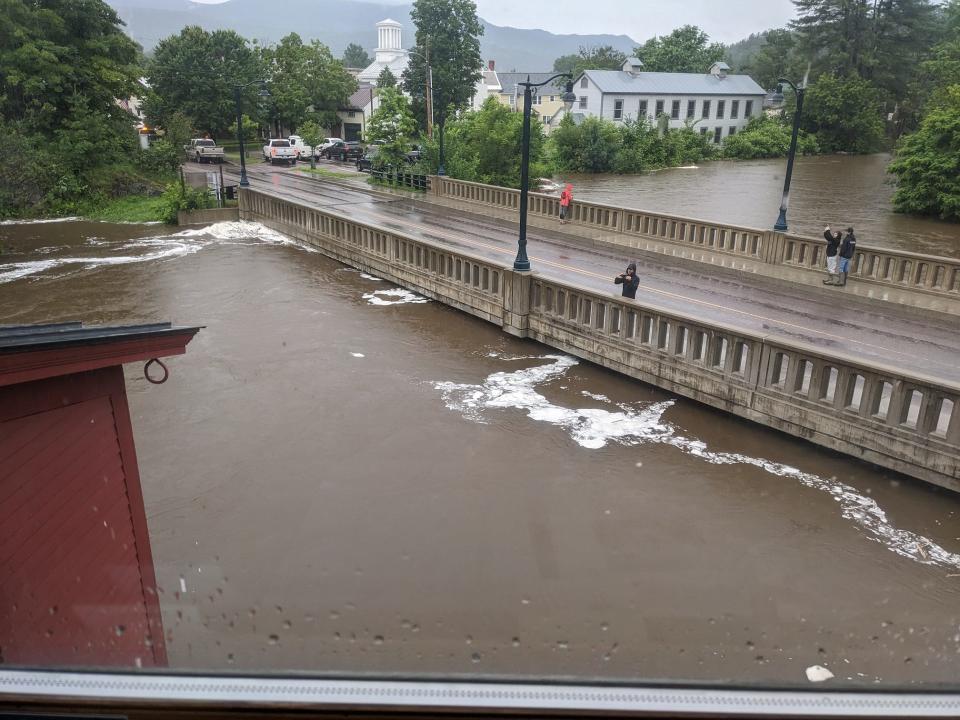
One public event was canceled on campus just after the flooding, but otherwise residents continue to come to Johnson to work on their art, though some have had to move to makeshift studios. The upper levels of the Red Mill Building are still in use, meaning public events such as artist talks can continue.
“Their work is inspiring and it’s such a great counterpoint” to the flooding, according to Sullivan. “It’s really fortunate that we are able to continue to function here (at the Red Mill). Morale-wise it would be really hard if we had to move from here.”
Still, there are hard moments ahead as the Vermont Studio Center looks to prevent future havoc.
“I think it’s going to be a marathon for us,” Sullivan said.
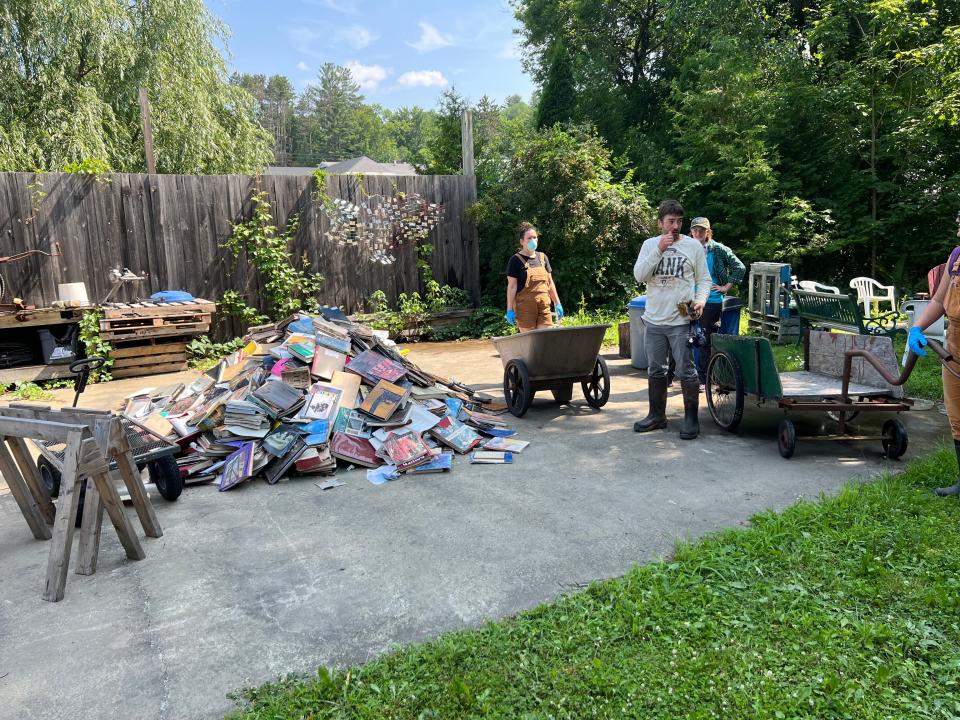
High spirits at ‘The Addams Family’
Lost Nation Theater completed two performances of “The Addams Family” musical at the Barre Opera House. Keenan, the producing artistic director, wrote in an email that the shows had great crowds – “not just in number (and there were lots & lots), but in spirit, enthusiasm and excitement. It was electric.” Bent introduced the show, according to Keenan, “and folks cheered and whooped for 3 minutes!”
The show looked and sounded as if Lost Nation had been able to go through three days of technical runs it had hoped but was unable to do, according to Keenan. She said the company received “beautiful and appreciative messages,” including from season-ticket holders who lost many belongings in the flood and “thanked us for doing it because the laughter and joy in the production was exactly what they needed.”
Soon, the company will turn its attention to its next production, “Sam & Jim in Hell,” a comic drama by Jeanne Beckwith developed with help from Lost Nation Theater. That play is due to open Oct. 5 – somewhere.
“We are still working on (w)here our final production of the season will take place, though we have some feelers out and expect to be able to go on as scheduled - just in another location,” Keenan wrote in an email. “It’s very unlikely (Montpelier) City Hall will be open to the public for quite some time.”
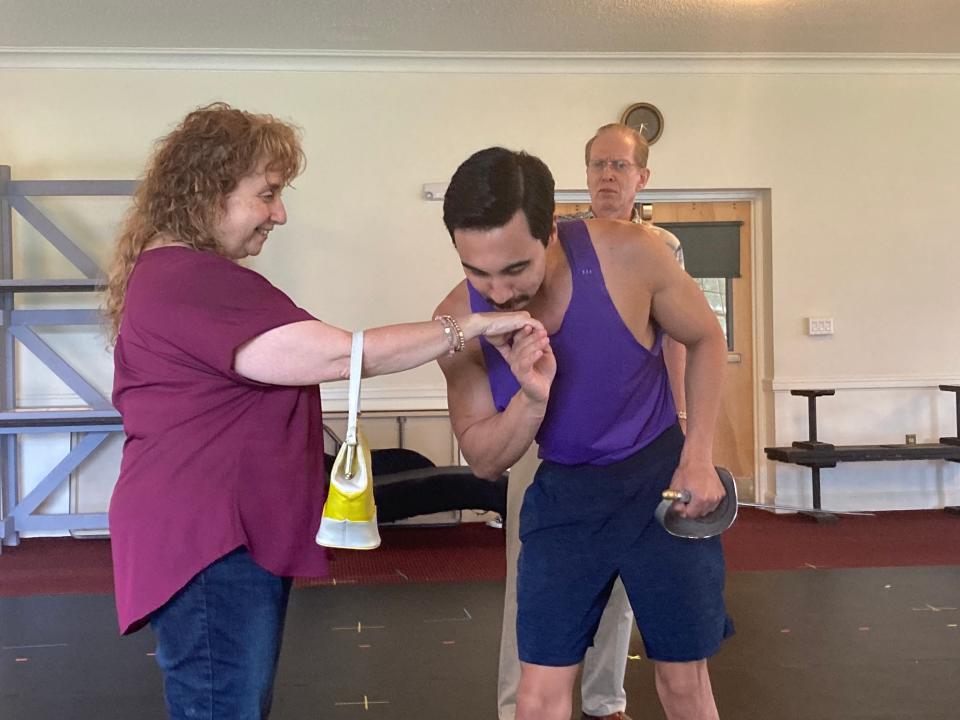
If you go
Upcoming events presented by the organizations mentioned in this article include:
Lost Nation Theater
WHAT: “Sam & Jim in Hell” by Jeanne Beckwith
WHEN: Oct. 5-22
WHERE: Location to be announced
INFORMATION: $10-$30. www.lostnationtheater.org
Weston Theater Company
WHAT: “Singin’ in the Rain”
WHEN: Through Aug. 20
WHERE: Walker Farm, Weston
INFORMATION: $25-$79. www.westontheater.org
Vermont Studio Center
WHAT: A reading and a talk on the craft of writing by Mexican-American author Vanessa Angelica Villarreal
WHEN: 7:30 p.m. Wednesday, Aug. 30 (reading), 10 a.m. Thursday, Aug. 31 (talk)
WHERE: Vermont Studio Center, Johnson
INFORMATION: Free. www.vermontstudiocenter.org
Contact Brent Hallenbeck at [email protected].
This article originally appeared on Burlington Free Press: Vermont arts groups present events while managing effects of floods